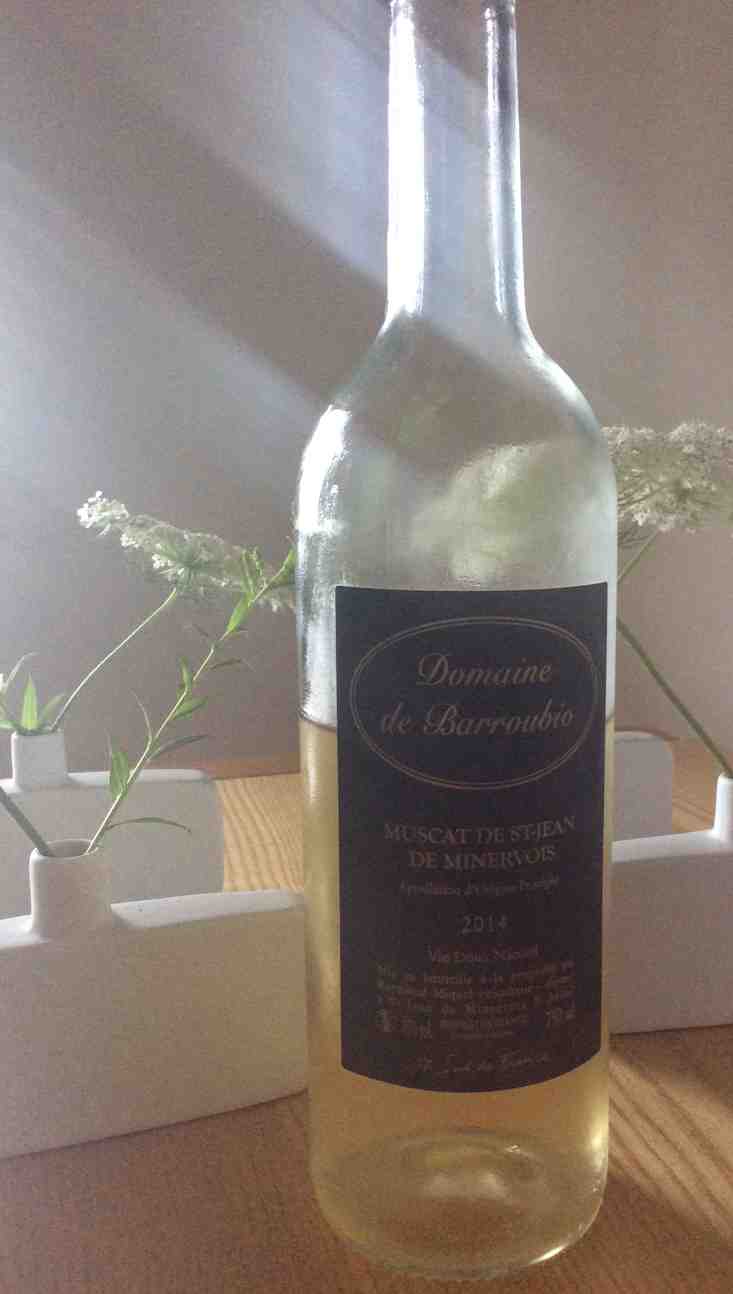Around 1,500 km separate the foothills of the Alps south of Munich and Jurançon in France, but despite this distance, both have a climatic similarity: the Foehn, a dry warm wind from the mountains, always blowing from the south. In wine-growing areas north of the Alps, in the autumn, the grapes intended for the production of a sweet wine can dry and rosinate in the vineyard on the vine, naturally concentrating the sugars. A well-known example of a sweet wine that benefits from the Foehn is a Flétri from Valais.
France
1963 Vin Doux Naturel – jewel of Puig-Parahÿ
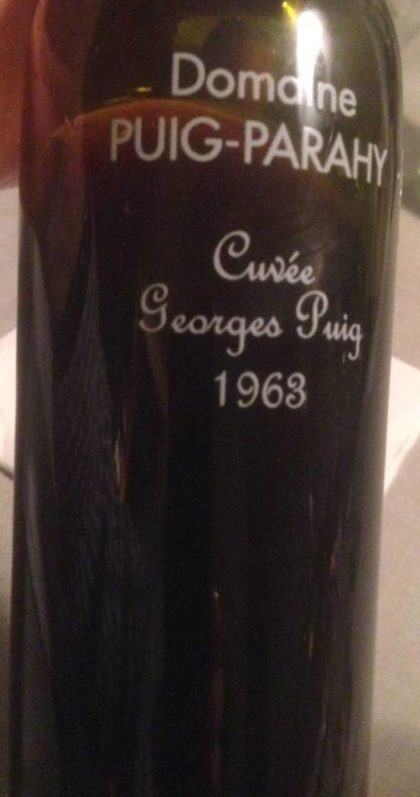 The Domaine Puig-Parahÿ is known for its Vin Doux Naturel (VDN). Nearly 50 vintages of Vin Doux Naturel, which are stored in Passa in the cellars of the Roussillon-based winery, are marketed. Many of these VDN date back to the last century. For Parker’s Wine Advocat, David Schildknecht had tasted just under a dozen of these VDN Rancios by Puig-Parahÿ from vintage vintages from 1875 to 1998 in 2009. They have been rated with 90 to 98 … Read more ...
The Domaine Puig-Parahÿ is known for its Vin Doux Naturel (VDN). Nearly 50 vintages of Vin Doux Naturel, which are stored in Passa in the cellars of the Roussillon-based winery, are marketed. Many of these VDN date back to the last century. For Parker’s Wine Advocat, David Schildknecht had tasted just under a dozen of these VDN Rancios by Puig-Parahÿ from vintage vintages from 1875 to 1998 in 2009. They have been rated with 90 to 98 … Read more ...
Elegant Vin Doux Naturel – Muscat de St.-Jean de Minervois
If you now and then like to drink a glass of fruity sweet wine, but the wine does not last long even in the fridge, you should try a Vin Doux Naturel (VDN) of Muscat grapes, which lasts much longer than most other sweet wines because of the way how it is produced.
The Muscat Vin Doux Natural, produced in different appellations, are almost all made from the grape Muscat Blanc de Petits Grains, as well as all all … Read more ...
Pineau de Charentes – Vin de liqueur with Cognac
 The Pineau de Charentes, a liqueur wine, is produced in the Cognac region, more specifically from the departments of Charente, Charente-Maritim and Deux-Sèvres. To produce a Pineau brandy from the AC Cognac is added to the fresh must of grapes, only a few hours after they have been harvested. The must may have started the fermentation and must have in any case more than 170 grams of sugar per liter. The cognac must have an alcohol content of … Read more ...
The Pineau de Charentes, a liqueur wine, is produced in the Cognac region, more specifically from the departments of Charente, Charente-Maritim and Deux-Sèvres. To produce a Pineau brandy from the AC Cognac is added to the fresh must of grapes, only a few hours after they have been harvested. The must may have started the fermentation and must have in any case more than 170 grams of sugar per liter. The cognac must have an alcohol content of … Read more ...
Floc – Vin de liqueur of the Gascony
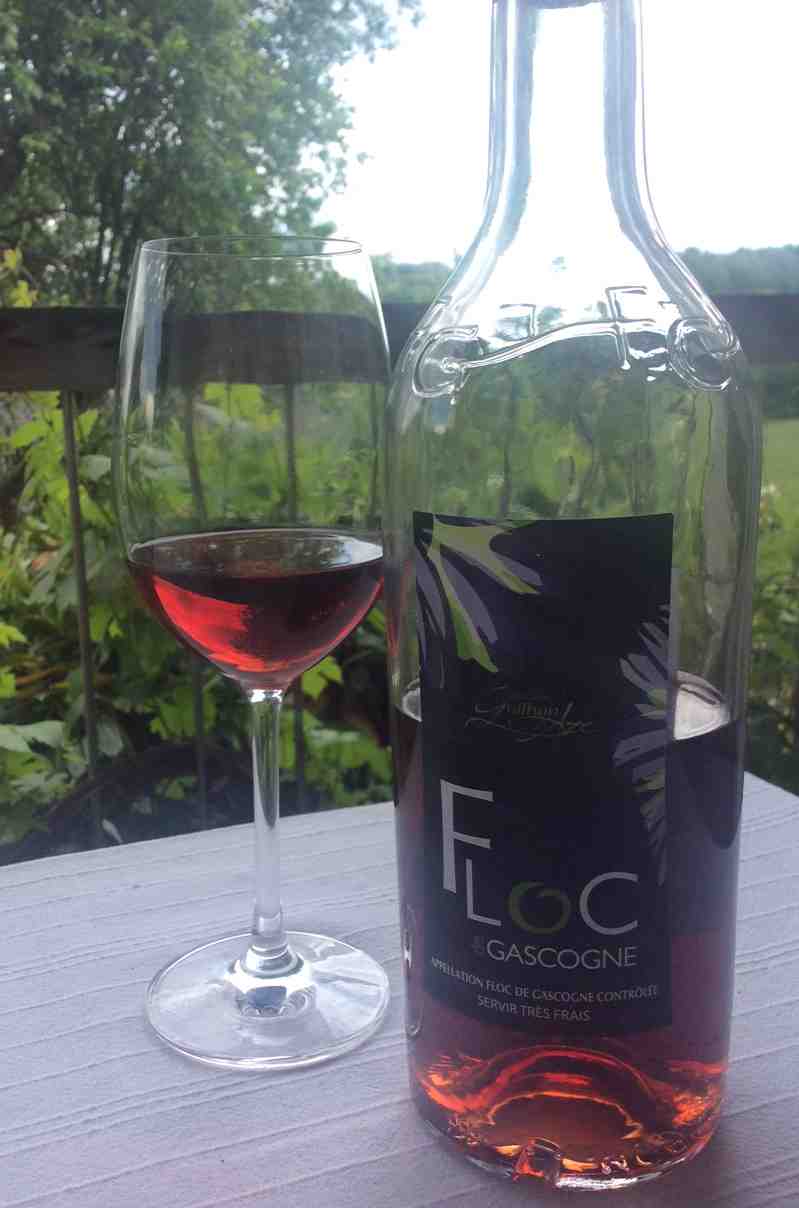
The list of French Vin de Liqueur is long. The Floc de Gascogne liqueur wine is not only drunk as an aperitif or as a dessert wine but also enjoyed with other dishes – an impression promoted on the website of Floc de Gascogne. The Floc de Gascogne, coming from the Gascony, located in south-western France, is composed of grape juice and Armagnac. There are both red (rosé or rouge) and white Flocs (blanc), … Read more ...
Vin de Paille from Côtes du Jura
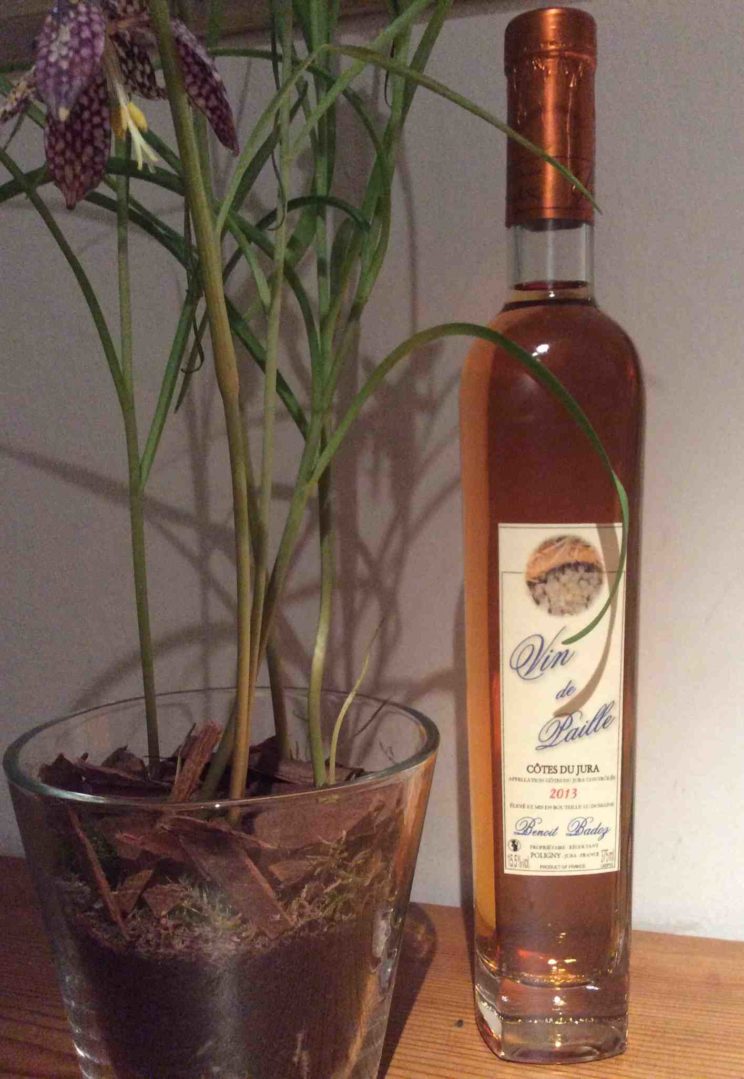
On the western foothills of the Massif de Jura, along the road N 83, there is, in an altitude of about 200 to 400 meters, the approximately 650 hectares large wine-growing area Côtes du Jura. In a semi-continental, rather cool and with about 1100 mm annual precipitation also rather wet climate, there are produced about 25,000 hectoliters of wine per year, mainly (~ 2/3) white wine, the rest red wine, Vin Jaune and also about 550 hectoliters of Vin … Read more ...
Matured sweet wines – fresh and youthful
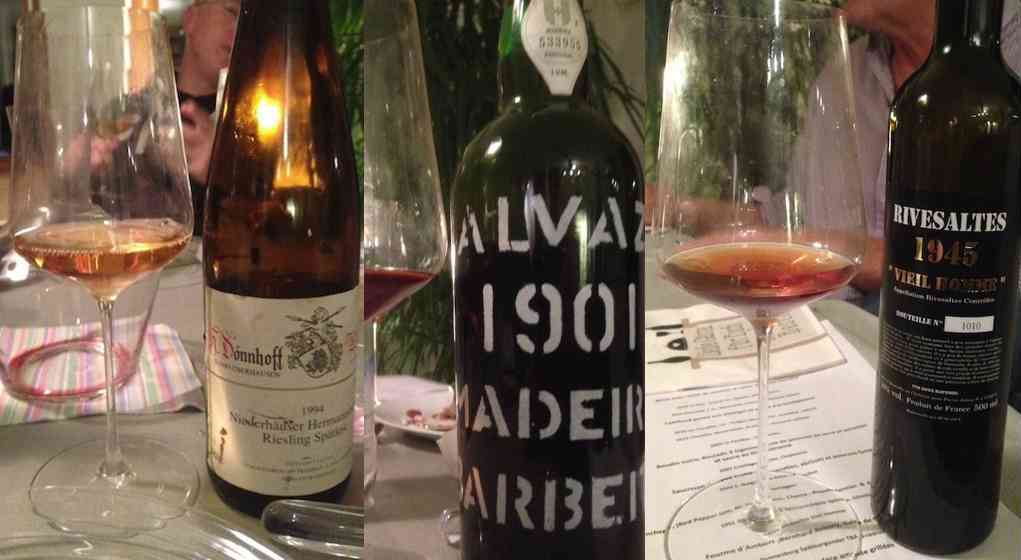
Hans had already opened some excellent wines to the excellent French dinner, including, for example, a 2013 Chevalier Montrachet from Domaine Leflaive and a 2005 Le Pavillon from Chapoutier. For cheese and dessert he had selected matured sweet wines, from German predicates such as Spätlese on Vin Doux Naturel to Madeira – all excellent.
1994 Niederhäuser Herrmannshöhle Spätlese, Dönnhoff
Quince, pear and white peach on the nose, delicately smoky. Very fresh on the palate, prominent acidity, mild fruit, juicy, lean, … Read more ...
Grand Cru from the Loire – Quarts de Chaume
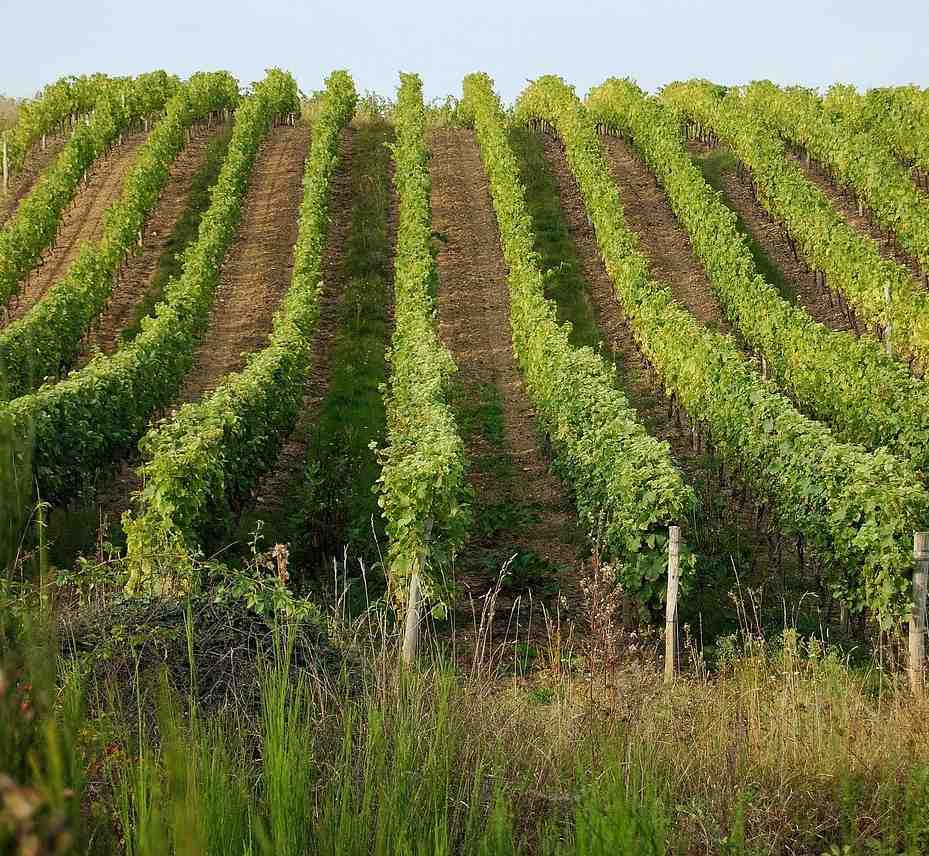
Château Bellerive cultivates twelve hectares of Chenin Blanc-planted vineyards in the commune of Rochefort-sur-Loire. Part of this community is located in the 54-hectares Quarts de Chaume appellation, which is also part of the nearly 3400 hectares AOC Coteaux du Layon.
Quarts de Chaume wines,- concentrated, expressive and extremely long-lived -, have the status Grand Cru, which can also be labeled on the label – the wines of the Coteaux du Layon appellation may only be labeled Premier Cru.
The Grand Cru status is due not only to the very low yield of 20 hectoliters per hectare, but also to the location. The vineyards in Quarts
Vouvray moelleux – pure balance
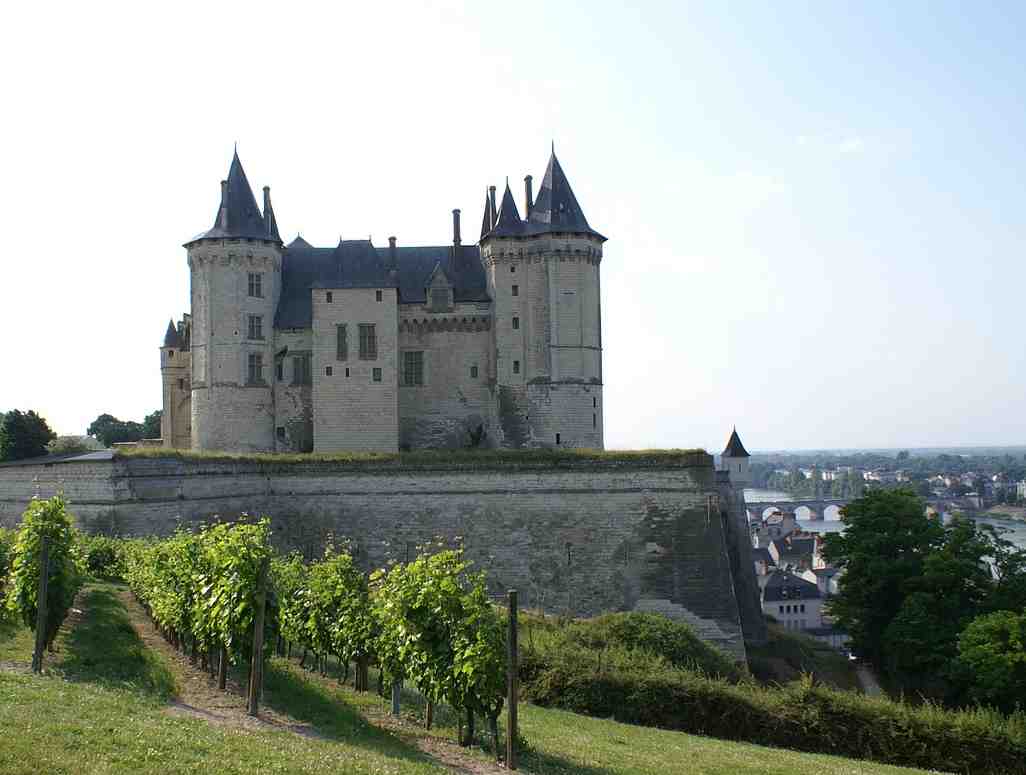
The Loire is known for its castles, unspoiled nature and the longest wine route in France. At the Loire you can find such well-known names as Muscadet, Sancerre or even Vouvray. Around the small town Vouvray and seven other neighboring communities, the eponymous wine-growing area extends in the Loire Valley east of Tours.
The vineyards are located on slopes made of tuff limestone, the top layer consists of flint clay or clay sand. The Vouvray is made in different styles from Chenin Blanc, whereby also a share of 5% Orbois Blanc is possible. Chenin Blanc is a grape variety with high-acid that produces very long-lasting wines in Vouvray.
Vouvray is produced both as sparkling wine and still wine. The still wines are dry (sec), semi-dry (demi-sec), sweet (moelleux) or noble sweet, (liquoreux). Only for dry wines, however, it is mandatory to mark this with the indication sec. For the more or less sweet variants, this obligation does not exist, but for many wines, especially sweet wines, this information can be
Rivesaltes Ambré – amber coloured complexity
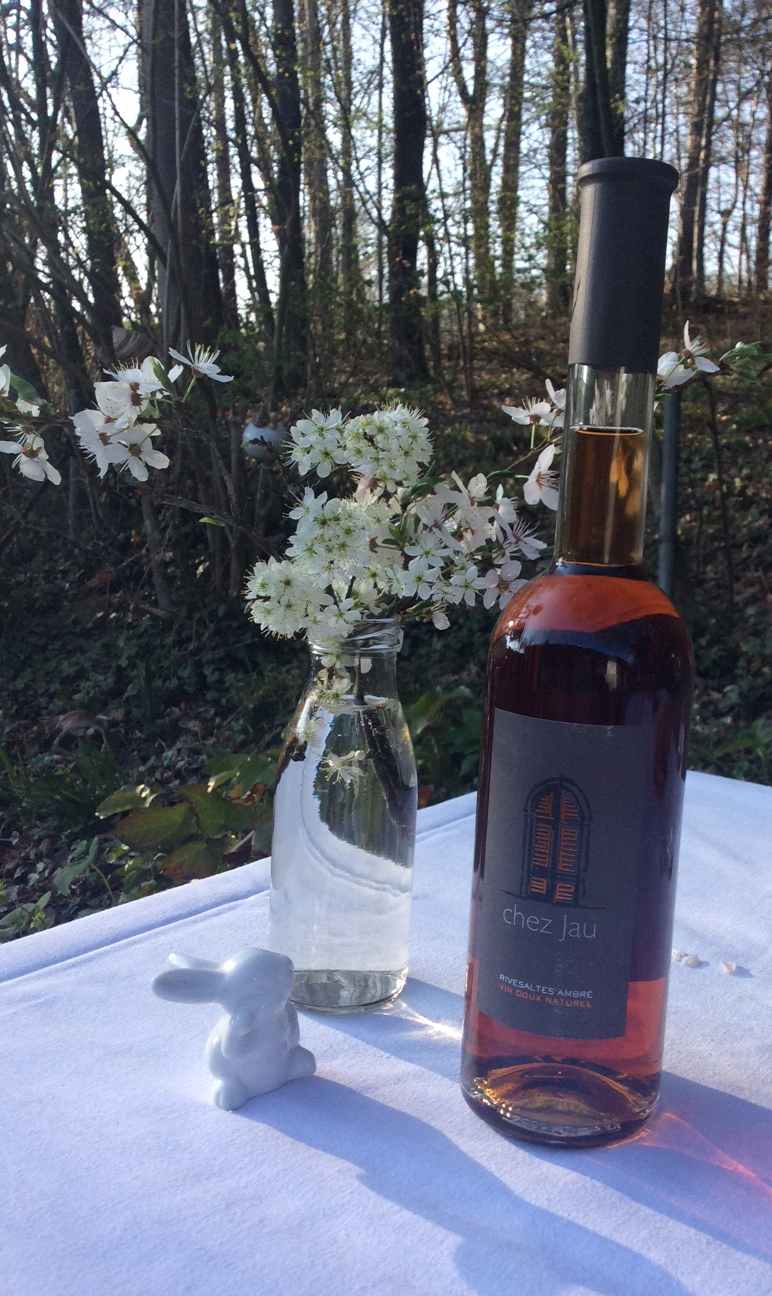 My first experiences with Vin Doux Naturel (VDN) were characterized by fresh dark red, reductively vinified Banyuls (rimage), only later followed the oxidatively vinified bright to brick red Banyuls (traditionnel or Grand Cru) and finally the other types of VDN. This order is not surprising, because Banyuls is the most well-known and frequently represented wine in the German wine trade of the sweet French VDN. During a visit to Roussillon, which accounts for over 80% of the total … Read more ...
My first experiences with Vin Doux Naturel (VDN) were characterized by fresh dark red, reductively vinified Banyuls (rimage), only later followed the oxidatively vinified bright to brick red Banyuls (traditionnel or Grand Cru) and finally the other types of VDN. This order is not surprising, because Banyuls is the most well-known and frequently represented wine in the German wine trade of the sweet French VDN. During a visit to Roussillon, which accounts for over 80% of the total … Read more ...

